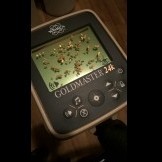Golden Grams Of Goodness: Nugget Shooting Stories
-
Similar Content
-
- 4 replies
- 788 views
-
- 1 reply
- 819 views
-
- 7 replies
- 1,119 views
-
- 3 replies
- 910 views
-
- 5 replies
- 1,341 views
-
- 37 replies
- 21,313 views
-
-







Recommended Posts
Create an account or sign in to comment
You need to be a member in order to leave a comment
Create an account
Sign up for a new account in our community. It's easy!
Register a new accountSign in
Already have an account? Sign in here.
Sign In Now